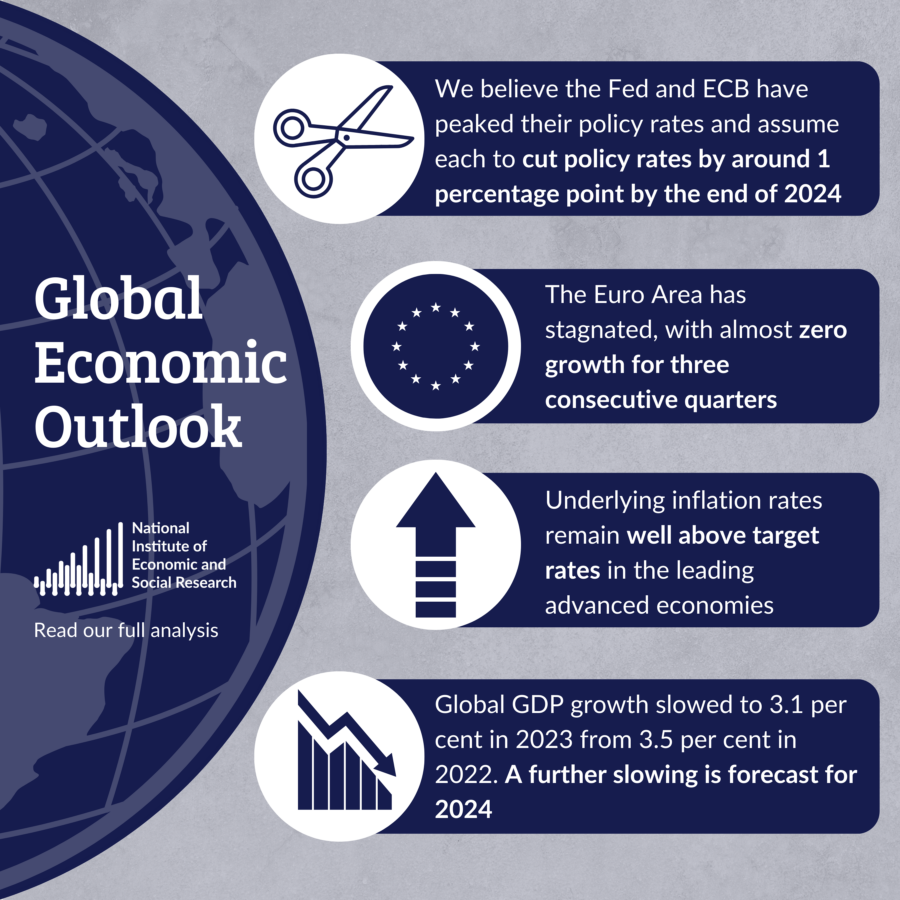Inflation Past the Peak But Growth Still Slowing
Global GDP growth is estimated to have slowed to 3.1 per cent in 2023 from 3.5 per cent in 2022 and a further slowing, albeit slight, is forecast for 2024. We anticipate slightly faster GDP growth in 2025 due to falling inflation and policy interest rate reductions in advanced economies, despite the lagged effects of previous monetary policy tightening.
Sign in to Access Pub. Date
Pub. Date
07 February, 2024
 Pub. Type
Pub. Type

Main points
- The Euro Area has stagnated, with the economy narrowly escaped recession, and Germany, its largest economy, experienced a contraction in GDP last year. In contrast, while not rapid, growth in the United States and in most emerging economies has held up. Although we expect slower global GDP growth, major economies are poised to avoid contractions in economic activity in 2024.
- Headline annual inflation rates have now fallen sustainably in the major advanced economies, mainly due to reduced price pressures from energy and food prices, the reduction in supply chain problems and the effects of rapid monetary policy tightening. However, underlying inflation rates remain above target rates in the leading advanced economies.
- With the peaks in headline inflation in the major advanced economies passed, underlying or ‘core’ inflation remains an issue for monetary authorities. Our forecast assumes that the fall in underlying inflation will continue at a gradual pace and that this will open the opportunity for central banks to reduce policy interest rates.
- We forecast that OECD annual inflation (based on the consumer expenditure deflator) will continue to fall, from 9.9 per cent last year to 7.1 per cent in 2024 and 3.8 per cent in 2025. Lower oil and commodity prices combined with sluggish economic activity will prompt lower inflation, although geopolitical events remain a risk to this outlook.
- We believe that the Federal Reserve (Fed) and the European Central Bank (ECB) have reached a peak in their policy rates and assume that each will cut policy rates by around 1 percentage point by the end of this year. But we see risks that central banks may keep policy rates at peak levels for a longer period depending on how inflation prospects play out. If GDP growth were to weaken and inflation fall substantially, larger rate reductions could result.
- Despite the gradual reductions in public debt-to-GDP ratios since 2021 (aided by high inflation), rising bond yields have put pressure on fiscal balances in advanced economies. With long term bond yields having recently reached their highest level since the global financial crisis, governments will be faced with the dilemma of little room for fiscal policy action in 2024 and 2025 at a time when many countries are holding elections.






















